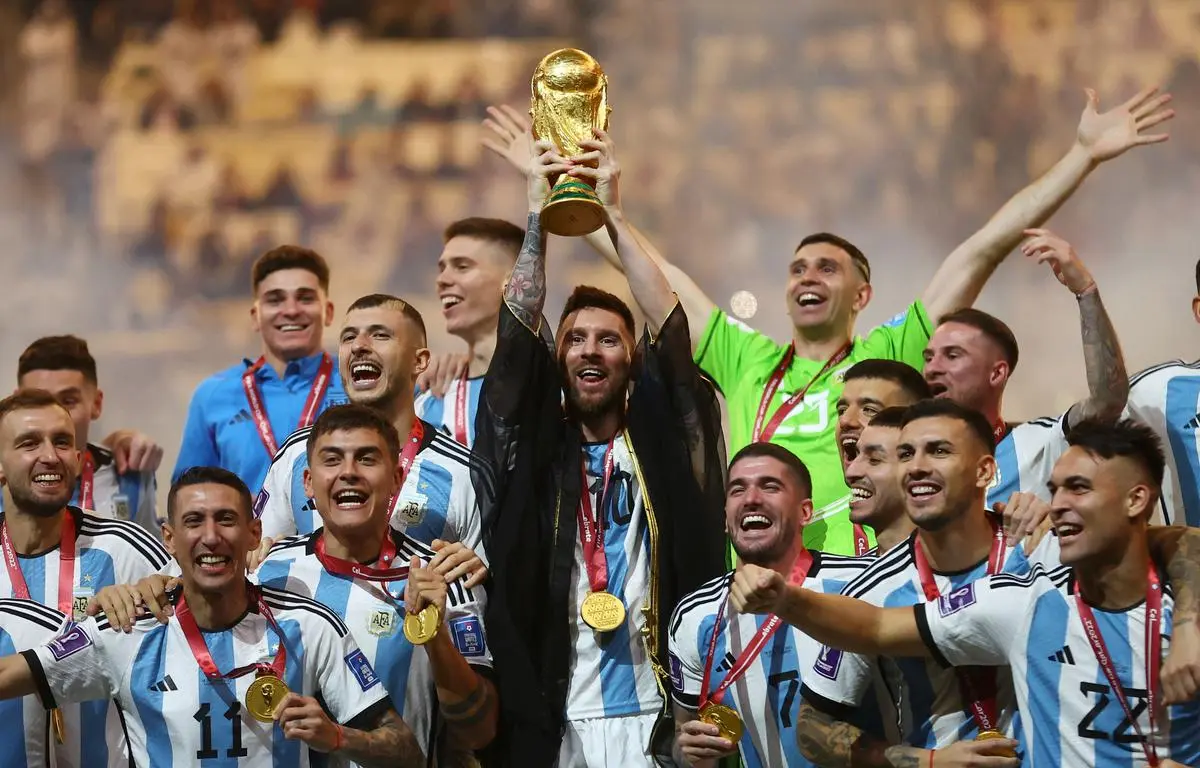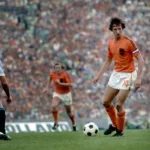The dream of uniting the world through football has always been challenging. For many fans, especially in developing countries, access to international sports once felt out of reach, leaving millions disconnected from the global community. If you’re a football enthusiast, historian, or even a casual fan curious about why the FIFA World Cup holds the power to halt entire nations, this article is for you. By understanding how the FIFA World Cup’s global growth turned it into the planet’s largest celebration of sport, you’ll see the magic that binds us across continents, cultures, and languages — all through one iconic tournament.
The Birth of a Phenomenon: Early Roots of the FIFA World Cup
The FIFA World Cup began in 1930, born out of the vision to create a truly global football tournament. Initiated by Jules Rimet, the third president of FIFA, the idea was straightforward yet ambitious: bring the best national teams together to compete on an international stage. Uruguay, celebrating its centennial independence anniversary, hosted the first tournament and even offered to cover travel costs for participating teams — a crucial factor during a time when the world was still reeling from the Great Depression.
Thirteen teams participated, mostly from the Americas and Europe, and Uruguay triumphed, defeating Argentina in the final. This moment laid the foundation for the FIFA World Cup’s global growth, setting a precedent for bringing nations together in peaceful competition.
The initial success proved that football had the emotional and cultural pull necessary to capture the hearts of millions. Though television was non-existent at that time, newspaper reports and radio broadcasts made the event resonate far beyond the stadiums.
Overcoming Early Challenges: World Wars and Organizational Struggles
Despite its promising start, the FIFA World Cup faced immense hurdles in its early years. The tournaments scheduled for 1942 and 1946 were canceled due to World War II, threatening the very existence of the competition. Financial strains, political disagreements, and limited transportation capabilities added layers of complexity.
However, FIFA remained persistent. In 1950, the tournament returned to life in Brazil. Although many European teams struggled to participate due to post-war economic hardships, Brazil invested heavily to revive global enthusiasm. The Maracanã Stadium, built for the event, could house nearly 200,000 spectators — a testament to football’s potential to inspire even during tough times.
This resilience played a pivotal role in ensuring that the FIFA World Cup’s global growth continued, turning it into more than just a sports competition: it became a beacon of hope, resilience, and unity.
The Rise of Media Influence: Taking Football to Every Corner
The role of media cannot be overstated in the FIFA World Cup’s global growth. When television broadcasts began during the 1954 World Cup in Switzerland, everything changed. Millions who could not afford to travel or had never seen a football match before now had front-row seats from their living rooms.
By the 1966 World Cup in England, television coverage expanded dramatically. That tournament was the first to be broadcast live internationally, allowing fans from Africa, Asia, and beyond to witness the drama unfold in real time. This accessibility ignited new waves of fandom and established football as the world’s sport.
Technological advancements — from color television to satellite broadcasts — further amplified the tournament’s reach. By the 1998 edition in France, the World Cup was viewed by an estimated 1.3 billion people worldwide during the final match alone, proving that football had truly become a universal language.
Expansion to New Continents: Global Inclusivity in Action
Initially, the World Cup was dominated by teams from Europe and South America, creating an uneven playing field. However, FIFA recognized that true global growth meant opening doors for underrepresented regions.
The 1970s and 1980s witnessed the gradual inclusion of more African, Asian, and North American teams. In 1994, the United States hosted the World Cup, breaking attendance records with 3.6 million fans across stadiums. This strategic move expanded the tournament’s fanbase beyond traditional strongholds.
Later, South Korea and Japan co-hosted the 2002 World Cup — the first ever held in Asia — cementing football’s status as a truly global sport. These expansions didn’t just expose new audiences to football; they also showcased the diversity and richness of talent worldwide.
Today, qualification pathways are more inclusive, and the expanded 48-team format for the 2026 World Cup ensures that football touches even more corners of the globe.
The Evolution of Global Fandom: More Than Just a Game
Fandom around the FIFA World Cup transcended mere sporting interest to become a cultural phenomenon. Flags, jerseys, chants, and street celebrations have turned the event into a month-long carnival of emotions.
Social media has taken this to a new level. During the 2014 Brazil World Cup, Twitter recorded 672 million tweets related to the event, with the Germany vs. Brazil semifinal becoming the most tweeted-about sports match in history. Platforms like Instagram and TikTok further amplify the experience, enabling fans to share their passion in real-time.
Brand collaborations, influencer campaigns, and official fan zones have created ecosystems where even casual observers can feel involved. The World Cup has morphed into a global festival — one that welcomes everyone, regardless of whether they understand the offside rule or not.
The FIFA World Cup’s global growth owes much to this collective spirit, where emotions, stories, and community come before competition.
Major Milestones That Shaped the FIFA World Cup’s Popularity
Throughout its history, certain moments have significantly accelerated the FIFA World Cup’s global growth. The 1958 tournament in Sweden introduced the world to Pelé, a 17-year-old sensation whose dazzling skill captured hearts everywhere. His rise symbolized how one player could inspire millions beyond national borders.
In 1970, Mexico hosted the first World Cup to be broadcast in color, making the spectacle even more captivating. Viewers could now see the vibrant jerseys, roaring crowds, and dramatic goal celebrations in full detail, strengthening emotional connections.
The 1986 tournament, also in Mexico, gave us Diego Maradona’s “Hand of God” and the “Goal of the Century” — two unforgettable moments that fueled debate and fascination worldwide. Such iconic memories are why the World Cup is far more than statistics; it’s about the stories that stay with generations.
Every milestone deepened fan loyalty and brought more people into the fold, fueling the unstoppable expansion of the World Cup’s global appeal.
Commercial Explosion: Sponsorships, Brands, and Big Money
The commercialization of the FIFA World Cup significantly accelerated its global growth. In the early days, sponsorships were modest and mostly local. However, the 1978 World Cup in Argentina saw the beginning of larger corporate involvement.
By the 1982 tournament in Spain, brands like Coca-Cola, Adidas, and McDonald’s recognized the World Cup’s marketing power and started investing heavily. Sponsorship packages evolved, offering exclusive advertising rights across TV, stadiums, and merchandise. These partnerships generated millions in revenue, ensuring that the tournament could expand its reach and quality.
Today, commercial revenues surpass billions of dollars. In the 2018 World Cup in Russia, FIFA reported $6.1 billion in total revenue. Official sponsors are not just funding matches; they’re funding dreams, stadiums, youth programs, and fan experiences across the world.
While critics sometimes argue that commercialization has its downsides, there’s no denying that strong financial support helped transform the World Cup into a global celebration of both sport and culture.
Socio-Political Impact: More Than Just a Game
The FIFA World Cup’s influence stretches far beyond the football pitch. It has often served as a powerful stage for social and political messages, helping shape public discourse.
In 1998, France’s diverse World Cup-winning squad symbolized the multicultural fabric of modern France, sparking conversations about immigration and national identity. More recently, players and fans have used the tournament to highlight issues like racial equality, gender rights, and even climate change.
At the same time, hosting the World Cup has become a major geopolitical tool. Nations use the tournament to showcase economic progress, national pride, and international relevance. For example, South Africa’s successful hosting in 2010 boosted African pride and signaled a new era of possibilities for the continent.
This unique ability to intertwine sports with social change is another key reason behind the FIFA World Cup’s global growth. It’s not just about lifting trophies; it’s about lifting voices.
Technological Innovations: Shaping the Future of the FIFA World Cup
Technology has played a crucial role in the FIFA World Cup’s global growth. Every new edition introduces innovations that enhance the experience for fans, players, and officials alike.
The introduction of Goal-Line Technology during the 2014 World Cup in Brazil solved decades of controversies surrounding disputed goals. Fans trusted that what they were seeing was accurate, increasing the tournament’s credibility.
The Video Assistant Referee (VAR) system, first used in the 2018 World Cup in Russia, further ensured fairness and transparency. While initially controversial, it has become an integral part of modern football, minimizing human error in crucial decisions.
Broadcasting technology has also advanced. High-definition, 4K, and even 8K streams allow fans worldwide to feel like they’re inside the stadium. Interactive features, instant replays, and multi-angle views deepen engagement, ensuring that each tournament feels more immersive than the last.
Cultural Celebrations: Football as a Global Festival
Beyond the matches themselves, the FIFA World Cup has evolved into a cultural celebration that transcends sports. Host nations showcase their traditions, music, food, and art to the world, turning each tournament into a month-long festival of global unity.
The opening and closing ceremonies have become spectacles watched by billions. Songs like Shakira’s “Waka Waka” for the 2010 World Cup and Ricky Martin’s “La Copa de la Vida” for the 1998 edition captured the spirit of their respective tournaments and are still played around the world.
Fan zones, public viewing areas, and themed celebrations have turned even small towns into centers of international camaraderie. These cultural moments strengthen emotional bonds among fans, creating memories that last far beyond the final whistle.
The blending of sports and culture makes each World Cup edition unique and adds another powerful layer to the tournament’s worldwide appeal.
Pros and Cons of the FIFA World Cup’s Massive Growth
Pros:
- Global Unity: The tournament brings together people from every corner of the world, promoting peace and friendship.
- Economic Boosts: Hosting countries benefit from infrastructure improvements, tourism, and global exposure.
- Inspiration: Young athletes find heroes to emulate, boosting sports participation worldwide.
- Technological Advancements: Innovations in broadcasting, officiating, and fan engagement improve the experience for everyone.
Cons:
- Financial Strain: Hosting can leave countries with massive debts if not managed properly.
- Commercialization Concerns: Excessive branding sometimes overshadows the spirit of the game.
- Political Controversies: Issues like human rights abuses in host countries occasionally mar the event’s reputation.
- Environmental Impact: Construction of stadiums and increased travel contribute to environmental challenges.
While the FIFA World Cup’s global growth brings countless benefits, balancing passion with responsibility remains essential for future editions.
Frequently Asked Questions (FAQs)
Who started the FIFA World Cup?
The FIFA World Cup was initiated by Jules Rimet, FIFA’s third president, in 1930. His vision was to create a global tournament where nations could compete in football on the biggest stage.
What makes the FIFA World Cup so special?
The FIFA World Cup unites billions of people from diverse backgrounds. It’s not just about winning; it’s about pride, passion, and connecting with others across the world through a shared love for the game.
Where has the FIFA World Cup been held the most?
Mexico, Italy, France, Germany, and Brazil have each hosted the tournament twice, showcasing their deep-rooted football cultures to the world.
Why did the World Cup expand to 48 teams?
The expansion aims to increase inclusivity by allowing more nations to participate. It provides greater opportunities for smaller and emerging football countries to showcase their talents.
How does the FIFA World Cup impact the world economically?
The World Cup stimulates tourism, infrastructure development, job creation, and international investment in host countries, although the long-term benefits can vary significantly based on management.
Will the FIFA World Cup continue to grow?
Yes. With technology advancements, broader global participation, and deeper cultural integration, the FIFA World Cup’s global growth shows no signs of slowing down.
Conclusion: The Unstoppable Power of Football
The FIFA World Cup’s global growth didn’t happen overnight. It has been fueled by resilience through wars, breakthroughs in technology, passionate fans, visionary leaders, and a deeply human need for unity and celebration. From its humble beginnings with thirteen teams in 1930 to a modern-day phenomenon touching billions, the tournament has shown the extraordinary power of sport to bridge divides and inspire generations.
As the World Cup continues to expand — with new formats, new technologies, and new voices — it remains more than just the world’s biggest sporting event. It’s a movement, a celebration of life, and a testament to what humanity can achieve when united by a simple, beautiful game.
Ready to feel the magic? Share this article, join the conversation in the comments, and tell us: what’s your favorite World Cup memory? ⚽🌍










